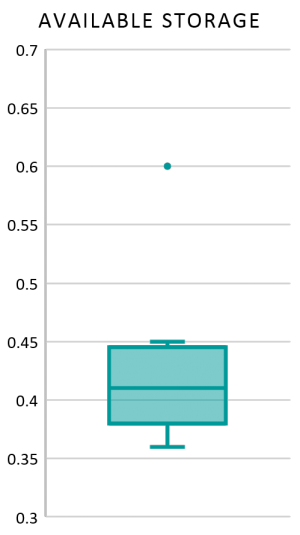Difference between revisions of "Bioretention media storage"
Jump to navigation
Jump to search
Jenny Hill (talk | contribs) m |
Jenny Hill (talk | contribs) m |
||
| Line 1: | Line 1: | ||
[[File:Bioretention storage.png|thumb|box plot of nine documented bioretention media]] | [[File:Bioretention storage.png|thumb|box plot of nine documented bioretention media]] | ||
Bioretention filter media may be assumed to have a storage capacity of 0.4. | Bioretention filter media may be assumed to have a storage capacity of 0.4. | ||
| + | |||
| + | This has been calculated as the difference between the media porosity and field capacity. | ||
| + | # Marine sand: 0.51 - 0.06 = 0.45 <ref name=Liu>Liu, Ruifen, and Elizabeth Fassman-Beck. “Pore Structure and Unsaturated Hydraulic Conductivity of Engineered Media for Living Roofs and Bioretention Based on Water Retention Data.” Journal of Hydrologic Engineering 23, no. 3 (March 2018): 04017065. doi:10.1061/(ASCE)HE.1943-5584.0001621</ref> | ||
| + | # Marine sand with 10 % compost: 0.51 - 0.11 = 0.40 </ref name=Liu> | ||
| + | # Marine sand with 20 % compost: 0.53 - 0.12 = 0.41 </rev name=Liu> | ||
| + | # Marine sand with 20 % compost & 20 % topsoil: 0.52 - 0.16 = 0.36 </rev name=Liu> | ||
Revision as of 23:28, 11 November 2018
Bioretention filter media may be assumed to have a storage capacity of 0.4.
This has been calculated as the difference between the media porosity and field capacity.
- Marine sand: 0.51 - 0.06 = 0.45 [1]
- Marine sand with 10 % compost: 0.51 - 0.11 = 0.40 </ref name=Liu>
- Marine sand with 20 % compost: 0.53 - 0.12 = 0.41 </rev name=Liu>
- Marine sand with 20 % compost & 20 % topsoil: 0.52 - 0.16 = 0.36 </rev name=Liu>
- ↑ Liu, Ruifen, and Elizabeth Fassman-Beck. “Pore Structure and Unsaturated Hydraulic Conductivity of Engineered Media for Living Roofs and Bioretention Based on Water Retention Data.” Journal of Hydrologic Engineering 23, no. 3 (March 2018): 04017065. doi:10.1061/(ASCE)HE.1943-5584.0001621
